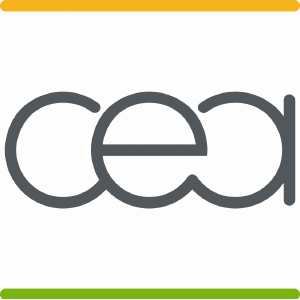Commissariat à l’énergie atomique et aux énergies alternatives
(CEA)
France
Shortname: CEA
Description of the organization
The Atomic Energy and Alternative Energies Commission or CEA was created in 1945. It is a French “public establishment related to industrial and commercial activities” whose mission is to develop all applications of nuclear power, both civilian and military. The missions of the CEA are equivalent to those of the United States Department of Energy. The permanent staff is over 16,000 persons. It conducts fundamental and applied research into many areas, including the design of nuclear reactors, the manufacturing of integrated circuits, the use of radionuclides for curing illnesses, seismology and tsunami propagation, the safety of computerized systems, etc. CEA is divided into 5 divisions: i) the division of nuclear energy (DEN);ii) the division of technological research (DRT);iii) the division of life sciences (DSV);iv) the division of sciences of matter (DSM) and v) the division of military applications (DAM).
CEA also have an institute (INSTN) which has a set of teacher-researchers, including professors and lecturers appointed by research and education Ministers. INSTN delivers different types of degrees and masters in Nuclear Engineering, in Radiological Physics and Medical, in science, Technology and Health, and in nuclear medicine. Our Department (DRCP) belongs to division of nuclear energy (DEN).
Main tasks attributed / previous experience related to those tasks
DRCP has for main mission to study and develop methods for the end of the nuclear fuel cycle, whether to improve processes reprocessing current study in the context of advanced separation of management pathways waste in the medium term, or explore options cycle for future nuclear systems. DRCP is a centre of excellence and expertise in the field of separation chemistry of actinides. Engineers and researchers of DRCP participate and contribute to national and international educational programs in nuclear chemistry, both at BSc and MSc levels either through our internal Institute (INSTN) or in relation with different agreed consortium (e.g. Paris Tech), Universities (e.g. Paris Sud XI) and engineering schools (e.g. Chimie Paris tech).
Moreover in FP 6 and FP7 our department has participated in the following IPs or NoEs: ASCEPT, EUROPART, ACTINET, FUNMIG. In addition to these EU projects, DRCP is participating in several IAEA projects and is involved in international commission or organization such as ICRP and UNSCEAR.
DRCP will mainly contribute to WP2 (Task 2.1, 2.2, 2.3) in the field of actinide chemistry and behaviour of radionuclide in the environment and human, and more or less to WP 1 (Task 1.4, 1.5) in the organization of workshops and education scientific content and to WP 4 (Task 4.1, 4.3, 4.4) in preparing grounds for future networking, organization of European workshop and nuclear awareness.
Short profiles of the key staff members
Eric Ansoborlo is an international expert for CEA. His research areas are actinide chemistry and behaviour, analytical speciation tools, radio-toxicology and dosimetry calculation. He authored 1 book, several chapters in 4 books, has published 93 international papers among which 35 as a first author, and has organized more than 10 international congresses in the field of behaviour of radionuclides and speciation with publication in international journals.
Dr Stephane Bourg (Project Manager in charge of basic research in nuclear physico-chemistry).
